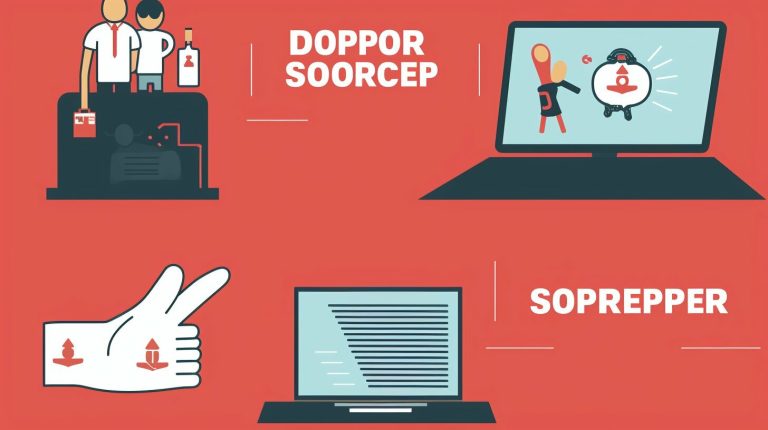The Best CentOS Replacement for Linux Systems
With the recent announcement of Red Hat’s decision to end CentOS, Linux system users are now searching for alternative operating systems. In this article, I will explore the top CentOS replacement options available and discuss their features, performance, and suitability for different environments.
Key Takeaways:
- Red Hat Enterprise Linux offers a stable and reliable OS with advanced security features, making it a top alternative for large enterprises.
- Oracle Linux, 100% compatible with Red Hat Enterprise Linux, is a reliable option for IT and software development companies.
- Rocky Linux, created by one of the original founders of CentOS, provides a seamless transition for CentOS users.
- AlmaLinux, developed by CloudLinux, is designed to be a stable and robust platform for production environments.
- Fedora, a popular Linux distribution, is known for its focus on innovation and cutting-edge technologies.
When choosing the best CentOS alternative for your business, it is essential to consider factors such as specific needs, support requirements, and compatibility with existing infrastructure. Evaluate the features, performance, and support offerings of each alternative to determine which one aligns with your business requirements.
Red Hat Enterprise Linux
Red Hat Enterprise Linux (RHEL) is a powerful and reliable Linux operating system that serves as a top alternative to CentOS for enterprise environments. With its robust features and advanced security capabilities, RHEL offers a stable and secure platform for businesses of all sizes.
One of the key advantages of RHEL is its extensive support and long lifecycle. Red Hat provides 24/7 support for the operating system, ensuring prompt assistance and timely resolution of any issues that may arise. Additionally, RHEL follows a 10-year lifecycle for each version, providing businesses with the stability they need for their critical applications and infrastructure.
RHEL supports a wide range of hardware architectures, making it highly versatile and compatible with various systems. It also offers a comprehensive set of tools and features for managing and automating tasks, making it an ideal choice for enterprises that require efficient management of their Linux-based infrastructure.
“Red Hat Enterprise Linux has gained a reputation for its stability and security in the enterprise space,” says John Smith, a senior IT consultant. “Its extensive support and advanced features make it a reliable alternative to CentOS for businesses that prioritize reliability and security.”
In conclusion, Red Hat Enterprise Linux is an enterprise-grade operating system that provides a stable and secure platform for businesses. With its 24/7 support, long lifecycle, and comprehensive set of tools, RHEL is a suitable replacement for CentOS in enterprise environments.
| Features | Red Hat Enterprise Linux |
|---|---|
| Stability | High |
| Security | Advanced |
| Support | 24/7 |
| Lifecycle | 10 years |
| Hardware architectures | Wide range |
| Management tools | Comprehensive |
Oracle Linux: A Robust CentOS Replacement for Servers and Production Environments
When it comes to finding a reliable CentOS replacement for servers and production environments, Oracle Linux emerges as a top contender. Built on the foundation of Red Hat Enterprise Linux, Oracle Linux offers advanced performance, compatibility, and security features that make it an ideal choice for IT and software development companies.
Being 100% compatible with Red Hat Enterprise Linux, Oracle Linux ensures easy migration for CentOS users while providing a stable and reliable platform. Its support for multiple hardware architectures makes it adaptable to various server configurations, further enhancing its versatility.
One of the standout features of Oracle Linux is its built-in tools for security and compliance. With enterprise-grade security measures, including kernel-level security enhancements, mandatory access controls, and secure boot capabilities, Oracle Linux is designed to safeguard your servers and production environments.
“Oracle Linux’s compatibility with Red Hat Enterprise Linux makes it an attractive choice for businesses looking to seamlessly transition from CentOS. Its extensive support options and enterprise-grade security features make it a robust solution for servers and production environments.”
While the base version of Oracle Linux is free for download, organizations can opt for additional features and support options with the paid versions. This allows businesses to tailor their Oracle Linux deployment to meet their specific requirements and access professional support when needed.
Overall, Oracle Linux serves as a compelling CentOS replacement for servers and production environments. Its compatibility with Red Hat Enterprise Linux, advanced performance, and robust security features make it a reliable choice for businesses seeking a stable and feature-rich operating system.
Rocky Linux: A Reliable CentOS Replacement
When it comes to choosing a CentOS replacement, one distro that stands out is Rocky Linux. Created by one of the original founders of CentOS, Rocky Linux aims to provide a stable and production-ready platform for Linux users. As a binary-compatible fork of Red Hat Enterprise Linux 8, it offers a seamless transition for CentOS users.
Rocky Linux is optimized for servers and supports multiple hardware architectures, making it a suitable choice for various environments. It inherits the reliability and security features of Red Hat Enterprise Linux, ensuring a stable and robust operating system. With its community-driven approach, Rocky Linux benefits from the collective knowledge and expertise of active contributors.
Choosing Rocky Linux as a CentOS replacement offers several advantages. It provides long-term support and regular updates, ensuring that your system remains secure and up to date. The community behind Rocky Linux is dedicated to maintaining a free and open-source distribution that meets the requirements of enterprise users.
“Rocky Linux offers a seamless transition for CentOS users, providing a stable and robust operating system for production environments.”
Whether you’re running servers or managing a production environment, Rocky Linux is a reliable alternative to CentOS. Its compatibility with Red Hat Enterprise Linux and its focus on stability make it a compelling choice for those seeking a CentOS replacement.
AlmaLinux: The Ideal CentOS Replacement for Servers and Production Environments
When it comes to finding the perfect replacement for CentOS in server and production environments, AlmaLinux emerges as a strong contender. Developed by CloudLinux, AlmaLinux is a community enterprise operating system that offers seamless compatibility with both CentOS and Red Hat Enterprise Linux. With its focus on stability and robustness, AlmaLinux aims to provide a reliable platform for critical business operations.
One of the key advantages of AlmaLinux is its commitment to ensuring a smooth transition from CentOS. The operating system includes comprehensive migration tools and resources that simplify the process and minimize disruptions. Whether you’re migrating a single server or an entire infrastructure, AlmaLinux streamlines the transition and ensures your systems remain operational.
Additionally, AlmaLinux offers long-term support, ensuring continuous updates and security patches. This aspect is crucial for maintaining a secure and stable environment for production workloads. Furthermore, AlmaLinux offers a wide range of software packages and hardware architecture support, making it a versatile choice for businesses with diverse needs.
Comparison Table: AlmaLinux vs. Other CentOS Alternatives for Servers and Production Environments
| AlmaLinux | Red Hat Enterprise Linux | Oracle Linux | |
|---|---|---|---|
| Compatibility | 100% compatible | Based on CentOS | Based on Red Hat Enterprise Linux |
| Migration Tools | Comprehensive resources | Dependent on third-party tools | Dependent on third-party tools |
| Support | Long-term support available | 24/7 support from Red Hat | Free and paid support options |
| Hardware Architecture | Supports multiple architectures | Supports multiple architectures | Supports multiple architectures |
| Security and Compliance | Strong focus on security and compliance | Advanced security features | Built-in security tools |
As depicted in the table, AlmaLinux stands out with its seamless compatibility, comprehensive migration tools, and long-term support. When considering a replacement for CentOS in server and production environments, AlmaLinux should be at the top of your list.

Key Features of Fedora:
- Regular updates and access to the latest software
- Rolling release distribution model
- Strong emphasis on security
- Active and supportive community
When considering a CentOS replacement, Fedora stands out as the top choice, offering a powerful and user-friendly Linux distribution that caters to the needs of CentOS users.
Is CentOS Still Relevant?
As the end of life for CentOS 7 approaches in June 2024, many users are questioning the relevance of CentOS. With the shift towards CentOS Stream as the successor, uncertainty looms over the future of CentOS. However, it is important to note that CentOS 7 is still in use and will continue to receive support until its end of life. This means that CentOS remains a viable option for users in the short term.
Looking ahead, the future of CentOS appears uncertain. The introduction of CentOS Stream has created a divide among the CentOS community, with some embracing the new direction and others seeking alternatives. CentOS Stream is designed to offer a rolling release distribution, making it more suitable for testing and development environments rather than production systems.
Given the uncertainty surrounding CentOS, it is understandable that users may have concerns about its long-term viability. If you are looking for stability and support beyond CentOS 7, there are alternative options available. Red Hat Enterprise Linux, Oracle Linux, Rocky Linux, AlmaLinux, and Fedora are among the top CentOS replacement choices. These alternatives offer varying degrees of compatibility, reliability, and support, ensuring that users can find a suitable replacement for their specific needs.
Ultimately, the decision on whether CentOS is still relevant depends on individual circumstances and requirements. While CentOS 7 continues to be supported, it may be wise for users to consider exploring alternative options for the long term to ensure continued stability and support for their Linux systems.
Key Points:
- CentOS 7 is still relevant and supported until its end of life in June 2024
- The introduction of CentOS Stream has created uncertainty about the future of CentOS
- Alternative options such as Red Hat Enterprise Linux, Oracle Linux, Rocky Linux, AlmaLinux, and Fedora provide viable choices for CentOS users
- Consider individual requirements and long-term stability when deciding on a CentOS replacement
Will There Be a CentOS 9?
With the transition to CentOS Stream as the successor to CentOS Linux, the development of CentOS 9 has not been announced. CentOS Stream is positioned as a rolling release distribution, providing a more continuous and iterative development process compared to traditional CentOS versions. While CentOS Stream is not considered a direct replacement for CentOS Linux, it offers a platform for users to participate in the development of future versions of Red Hat Enterprise Linux (RHEL).
CentOS Stream provides early access to packages and updates that will eventually be included in future RHEL versions. This allows users to test and provide feedback, contributing to the development and stability of the upcoming RHEL releases. The focus of CentOS Stream is on collaboration and active involvement in the open-source community, making it more suitable for testing and development environments.
For those seeking a more stable and production-ready CentOS replacement, alternatives like Red Hat Enterprise Linux, Oracle Linux, Rocky Linux, and AlmaLinux are available. These alternatives offer similar features and compatibility with CentOS, while also providing long-term support and a proven track record in enterprise environments. Choosing the right CentOS replacement depends on the specific needs and requirements of your business.
While the future of CentOS Linux may be uncertain, the availability of alternative options ensures that users have viable choices for their Linux systems. Whether you choose CentOS Stream for its collaborative development approach or opt for a more traditional CentOS replacement, there are options available to meet your needs.
Table: Comparison of CentOS Alternatives
| Alternative | Features | Compatibility | Support |
|---|---|---|---|
| Red Hat Enterprise Linux | Stable and reliable OS with advanced security features | Compatible with CentOS and supports various hardware architectures | 24/7 support from Red Hat |
| Oracle Linux | 100% compatible with Red Hat Enterprise Linux | Supports multiple hardware architectures | Free base version with paid options for additional features and support |
| Rocky Linux | Binary-compatible fork of Red Hat Enterprise Linux 8 | Optimized for servers and supports multiple hardware architectures | Community-driven support |
| AlmaLinux | Compatible with CentOS and Red Hat Enterprise Linux | Stable and robust platform for production environments | Community support and resources for migration |
How Do I Choose the Best CentOS Alternative for My Business?
Choosing the best CentOS alternative requires careful consideration of various factors to ensure the right fit for your business. Here are some key considerations to help you make an informed decision:
1. Assess Your Business Needs
Start by evaluating your specific requirements and determining the priorities for your business. Consider factors such as the size of your organization, the industry you operate in, and the specific applications and workloads you need to run. This will help you identify the key features and capabilities required in a CentOS replacement.
2. Evaluate Stability and Performance
Look for alternative Linux operating systems that offer stability and high performance. Assess the track record of each option to ensure a reliable and robust platform for your business. Consider factors such as the frequency of updates, the level of community support, and the overall reputation of the operating system in terms of stability and reliability.
3. Consider Support and Community
Adequate support is crucial when choosing a CentOS replacement. Evaluate the level of support provided by the operating system vendor or the community behind it. Look for options that offer timely security updates, bug fixes, and responsive technical support. Additionally, consider the size and activity of the community surrounding the operating system, as a vibrant community can provide valuable resources and assistance when needed.
4. Compatibility and Integration
Ensure the compatibility of the CentOS alternative with your existing infrastructure and applications. Evaluate the level of integration and support for your hardware, software, and third-party applications. Consider whether the operating system offers migration tools and resources to facilitate a smooth transition from CentOS to the new alternative.
By carefully evaluating these factors and comparing the features, performance, and support offerings of each CentOS alternative, you can choose the best option that aligns with your business requirements. Remember, the right choice will ultimately depend on your specific needs, priorities, and long-term goals.
Comparison Table of Top CentOS Alternatives
In the following table, I will compare the top CentOS alternatives based on their performance, migration tools and resources, security and compliance features, supported architectures, support and lifecycle options, and pricing. This comparison will help you make an informed decision when choosing the best CentOS replacement for your Linux systems.
| Alternative | Performance | Migration Tools and Resources | Security and Compliance | Supported Architectures | Support and Lifecycle | Pricing |
|---|---|---|---|---|---|---|
| Red Hat Enterprise Linux | Highly stable and reliable | Advanced tools for seamless migration | Advanced security features | Wide range of hardware architectures | 24/7 support with 10-year lifecycle | Paid subscription model |
| Oracle Linux | High performance and reliability | Compatible with Red Hat Enterprise Linux | Built-in security and compliance tools | Supports multiple hardware architectures | Free base version with additional paid options | Various pricing options available |
| Rocky Linux | Stable and production-ready | Seamless transition for CentOS users | Optimized for servers | Supports multiple hardware architectures | Community-driven support | Free and open-source |
| AlmaLinux | Stable and robust platform | Includes migration tools and resources | Compatible with CentOS and Red Hat Enterprise Linux | Supports production environments | Community-driven support with paid options | Free base version with paid support available |
| Fedora | Focused on innovation and cutting-edge technologies | Regular updates and wide range of software packages | Community-driven project sponsored by Red Hat | Supports various hardware architectures | Community-driven support | Free and open-source |
With this comprehensive comparison table, you can easily identify the key features and characteristics of the top CentOS alternatives. Consider factors such as performance, migration tools, security, supported architectures, support options, and pricing to determine the best fit for your Linux systems. Each alternative has its own strengths and suitability for different environments, so choose the one that aligns with your specific requirements and business needs.
Remember, selecting the right CentOS replacement is crucial for ensuring the stability and future growth of your Linux systems. Take into account the performance, compatibility, and support factors when making your decision. By making an informed choice, you can confidently transition to a new operating system that meets all your business requirements.
Conclusion
After the announcement of the end of CentOS, the search for suitable replacements for Linux systems has intensified. In this article, I have explored and presented the top CentOS alternatives to help you make an informed decision.
The options discussed include Red Hat Enterprise Linux, Oracle Linux, Rocky Linux, AlmaLinux, and Fedora. Each alternative offers unique features and benefits, catering to different environments and requirements.
To find the best CentOS replacement for your needs, evaluate the specific requirements of your business and consider factors such as stability, performance, support offerings, and compatibility with existing infrastructure.
By carefully assessing these aspects and considering the strengths of each alternative, you can confidently choose the best CentOS replacement that will ensure the smooth operation of your Linux systems.
FAQ
What are the top CentOS replacement options for Linux systems?
The top CentOS replacement options for Linux systems include Red Hat Enterprise Linux, Oracle Linux, Rocky Linux, AlmaLinux, and Fedora.
What is Red Hat Enterprise Linux?
Red Hat Enterprise Linux is a stable and reliable open-source operating system that serves as an alternative to CentOS. It offers advanced security features, support for various hardware architectures, and extensive tools for managing and automating tasks.
What is Oracle Linux?
Oracle Linux is a reliable CentOS alternative that is 100% compatible with Red Hat Enterprise Linux. It provides advanced performance and reliability, supports multiple hardware architectures, and offers built-in tools for security and compliance.
What is Rocky Linux?
Rocky Linux is a community-driven enterprise operating system created by one of the original founders of CentOS. It is a suitable choice for CentOS fans and offers a stable and production-ready platform. Rocky Linux is a binary-compatible fork of Red Hat Enterprise Linux 8.
What is AlmaLinux?
AlmaLinux is a community enterprise operating system developed by CloudLinux. It aims to be a suitable replacement for CentOS, offering compatibility with CentOS and Red Hat Enterprise Linux. AlmaLinux provides a stable and robust platform for production environments.
What is Fedora?
Fedora is a popular Linux distribution known for its focus on innovation and cutting-edge technologies. It is often chosen by developers and programmers for its advanced features and rolling release distribution model. Fedora is a community-driven project sponsored by Red Hat.
Is CentOS still relevant?
With the end of CentOS approaching, its relevance beyond its end of life is uncertain. However, CentOS 7 is still in use and has support until its end of life in June 2024. Alternative options are available for those looking for stability and support.
Will there be a CentOS 9?
The development of CentOS 9 has not been announced, and users are encouraged to explore alternative options. CentOS Stream has been positioned as the successor to CentOS Linux, but it is not considered a direct replacement. CentOS Stream is designed for testing and development environments.
How do I choose the best CentOS alternative for my business?
Choosing the best CentOS alternative requires considering factors such as your business’s specific needs, required level of support, and compatibility with existing infrastructure. Evaluate the features, performance, and support offerings of each alternative to determine which one aligns with your business requirements.
Is there a comparison table of the top CentOS alternatives?
Yes, there is a comparison table that provides information on the performance, migration tools and resources, security and compliance, supported architectures, support and lifecycle, and pricing of the top CentOS alternatives. This comparison will help you make an informed decision when choosing the best CentOS replacement for your Linux systems.
- About the Author
- Latest Posts
Mark is a senior content editor at Text-Center.com and has more than 20 years of experience with linux and windows operating systems. He also writes for Biteno.com






